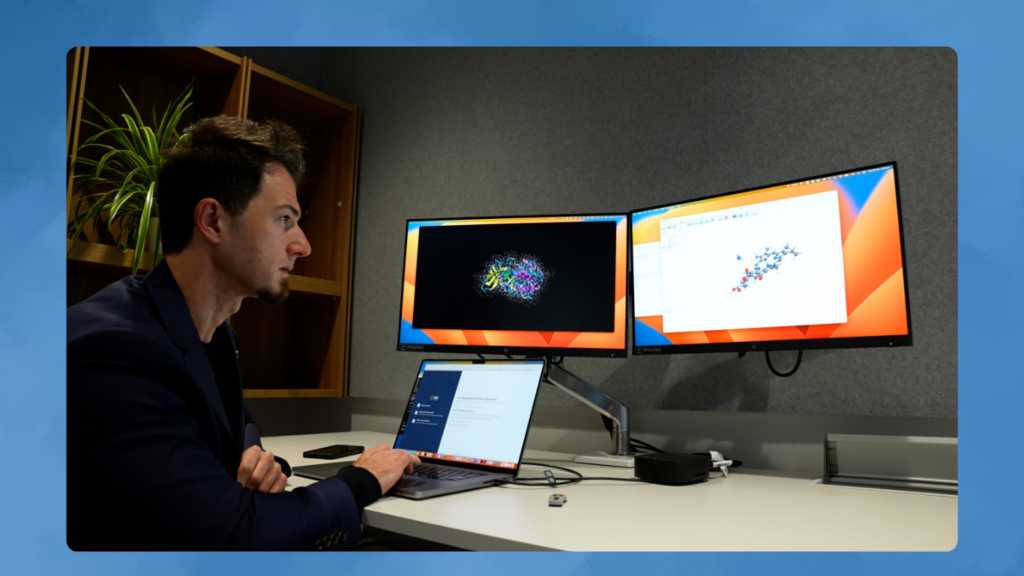A major advancement in high-performance computing (HPC) and quantum chemistry, powered by the world’s fastest supercomputer and leading-edge technology, is set to transform drug discovery, opening new possibilities for targeting a variety of diseases.

Key Achievements and Innovations
Under the guidance of Associate Professor Giuseppe Barca, a theoretician and HPC expert from the University of Melbourne, a research team has achieved the first quantum simulation of biological systems at a scale necessary to accurately model drug performance. This significant milestone marks a new era in computational chemistry.

The team utilized the unprecedented “exascale” power of the Frontier supercomputer at the Oak Ridge Leadership Computing Facility in Tennessee, USA. They developed groundbreaking software capable of predicting chemical reactions and the physical properties of molecular systems with up to hundreds of thousands of atoms. This achievement sets a new standard for accurate predictions of molecular behavior.
Collaborative Efforts and Contributions
The ambitious project brought together experts in chemistry, drug discovery, quantum mechanics, and supercomputing. Collaborators included the Oak Ridge National Laboratory, semiconductor giant AMD, and deep-tech startup QDX. After over four years of intensive research, the team’s efforts have culminated in the ability to study biomolecular-scale systems with quantum-level accuracy for the first time. This new capability is crucial for improving traditional drug evaluations and designing new therapeutics that can interact more effectively with target biological systems.
“This is precisely why we built Frontier—to tackle larger, more complex problems facing society,” said Dmytro Bykov, a computational chemist at Oak Ridge National Laboratory. “By breaking the exascale barrier, these simulations push our computing capabilities into a new realm of possibilities, with unprecedented sophistication and radically faster times to solution. This is just the beginning of the exascale era.”
Practical Implications and Future Prospects
“We can now simulate drug behavior with accuracy that rivals physical experiments,” said Associate Professor Barca. “We’re able to observe not only the movement of a drug but also its quantum mechanical properties, such as bond breaking and formation, over time in a biological system. This is vital for assessing drug viability and designing new treatments.”
Current methods fall short, as over 80 percent of disease-causing proteins cannot be treated with existing drugs, and only two percent are responsive to known drugs. Advanced quantum mechanics and HPC expand the computational tools available for drug discovery, offering unprecedented speed and accuracy at biologically relevant scales. These advancements also provide new insights and capabilities, previously unattainable with traditional computational chemistry, that can unlock new ways to target therapeutic interest and expand the number of disease targets for effective therapies.
The simulations can compute a drug molecule’s affinity for a specific target, such as a genetically mutated protein causing disease. Algorithms evaluate the drug’s effectiveness by calculating the bond strength between the drug and the target, demonstrating drug potency. To test a drug effectively through quantum simulation, the biological model system must integrate thousands of atoms.
Industry Reactions and Endorsements
Dr. Jakub Kurzak, principal member of technical staff at AMD, highlighted the importance of this achievement: “We are excited to see AMD’s high-performance computing technologies enabling breakthrough exascale science in medical research, providing the computing power to accurately model the complex physics of molecular systems for drug discovery.”
Loong Wang, Co-Founder and CEO of QDX, shared his enthusiasm: “At QDX, we are incredibly excited to turn groundbreaking scientific advancements into a powerful, user-friendly platform that accelerates and enhances drug discovery, opening doors to innovative treatments. Our advanced quantum simulations have set a new benchmark for accuracy at biologically relevant scales. We hope this technology will enable new drugs to be developed faster and more cost-effectively, and for diseases that have so far been too difficult to treat.”
Recognition and Commercial Success
Associate Professor Barca, based in the Faculty of Engineering and Information Technology’s School of Computing and Information Systems, was recognized as one of Australia’s Top 250 Researchers by The Australian in 2024. In 2023, he co-founded QDX, which is already using high-performance quantum simulations to accelerate the design of new therapeutics. QDX has secured commercial deals with pharmaceutical companies and tech startups in Australia, Singapore, and the US.
“Thanks to new computing and software capabilities that enable accurate modeling at the quantum mechanical level, we can achieve predictive accuracy close to experimental results. These calculations were completely unfeasible just a few years ago,” Associate Professor Barca noted.
This breakthrough represents a significant leap in computational chemistry and paves the way for more effective and efficient drug discovery processes, potentially leading to new treatments for a wide array of diseases. The collaboration and technological advancements showcased in this project highlight the transformative potential of combining HPC and quantum chemistry in medical research.

Subtly charming pop culture geek. Amateur analyst. Freelance tv buff. Coffee lover
